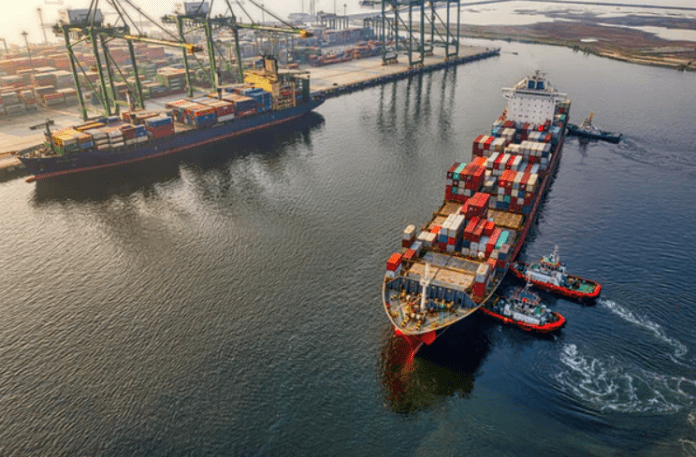The Greenhouse Gas (GHG) targets set by the International Maritime Organization (IMO) and other regulatory vehicles, such as the Carbon Intensity Indicator (CII) and the Energy Efficiency Existing Ship Index (EEXI) have provided all ship owners and operators with parameters for meeting interim GHG targets in 2030, 2040 and, ultimately, achieving net zero by or around 2050.
The extension of the EU Emissions Trading System (ETS) in 2024, as well as the upcoming implementation of FuelEU Maritime requirements to limit carbon intensity from 2025, have put further pressure on owners and operators to implement emissions reduction measures now; and the general consensus across industry is that other regions will likely follow suit with similar initiatives in the coming years.
While these regulatory tools give industry and energy supply chains a clearer idea of where we are going, there are still significant questions about how to get there. In large part, the impetus is on vessel owners and operators to make both immediate and lasting change while there is still significant uncertainty surrounding the viability and availability of future fuels.
Moving into position
Vessel owners and operators are in an unenviable position, and it is important to recognise that the practical considerations of adopting future fuels and various other emissions reduction technologies and strategies differ across vessel segments. When it comes to future fuels, there’s no one-size-fits-all solution – nor will there be for some time to come.
Operators of container ships on liner routes, it could be argued, are at a relative advantage in making longer-term future fuelling decisions because they benefit from less variation in ports-of-call and therefore have more foresight over how to adapt to planned infrastructure and fuel availability along these routes in the coming years. For container ships on the tramp trades, there is less certainty.
Regardless, all owners and operators need to make emissions reduction decisions and investments today to stay on track with the regulatory schedule and reporting requirements, particularly CII ratings, which have an immediate impact on performance and the bottom line. Container ships are also facing unique pressure as their customers and end consumers are making tougher demands as they hope to lower the indirect Scope 3 emissions from across their value chain. Here, there is a lot of work to do.
In 2022, Wärtsilä performed an analysis of the global fleet that revealed some startling conclusions. Firstly, more than one-third of container ships are already likely to be non-compliant with CII requirements to maintain an A-C rating, falling into categories D and E. Secondly, the analysis showed that by 2030, if no action is taken, 80% of container ships will be in category E and therefore non-compliant.
Future-proofing container shipping
When it comes to finding the right solution for significantly reducing emissions, one catch-all strategy revolves around exploring solutions that prioritise fuel flexibility and efficiency. This ensures operators utilise a range of fuels depending on their future scalability and suitability for individual vessels and fleets over the vessel lifecycle without being tethered to a single-fuel solution.
In short, ‘fuel-flexible’ engines capable of running on conventional bunker fuels as well as transitional and alternative future fuels – notably LNG, biofuels, methanol and ammonia – enable owners and operators to overcome the uncertainty of changing market dynamics and uncertainty around fuel availability and cost in the future.
Of course, careful decisions need to be made about which fuel-flexible system to adopt for each vessel, which is why working closely with engine manufacturers is crucial. With all alternative fuels, there are practical considerations unique to container vessels that need to be considered. Methanol engines may require almost double the fuel tank capacity compared to diesel, meaning either larger fuel tanks which could take up cargo capacity, or more frequent bunkering. There are storage and handling considerations, too, with ammonia, needing attention given it is a highly volatile and corrosive fuel.
Utilising methanol and ammonia-ready engines, such as those unveiled by Wärtsilä in 2023, can enable the crew to seamlessly transition between different fuel types with minimal modifications and without power interruption, increasing the choices available.
These new future-fuel-ready engines can significantly enhance regulatory compliance through reduced emissions output. Wärtsilä’s methanol engine range can reduce tailpipe CO2 emissions by up to 7% against EEXI and CII indexes, alongside a 60% nitric oxide (NOx) and 99% sulphur oxide (SOx) reduction. Considering a well-to-tank approach – which may be introduced by the IMO – a reduction of up to 88% could be possible for green methanol.
The four-stroke Wärtsilä 25 Ammonia-ready engine can produce an immediate greenhouse gas emissions reduction of at least 70% compared to a similar sized diesel engine on a well-to-wake basis, using green ammonia.
Foresight ensures future competitiveness
Taking an existential perspective, fuel-flexible propulsion systems are going to be essential to getting maritime to net zero. In a generally conservative and risk-averse industry, fuel-flexible approaches provide a solution for reducing emissions today and give wider supply chains the real-world intelligence and impetus to make future fuels available at scale.
Author of the article: Mikael Wideskog, Director, Sustainable Fuels & Decarbonisation, in the R&D and Engineering organisation, Wärtsilä

Mikael Wideskog joined Wärtsilä in 1993 and has held a number of expert and managerial positions.
Mikael Wideskog is a member of many organisations influencing the creation of smart technologies for a sustainable society. To mention a few, he is deputy president of EUROMOT, chairman of the board of CLIC Innovation, Finnish Hydrogen Cluster SteCo member and chairman of Combustion Engines from Finland, the national membership organisation of CIMAC.







